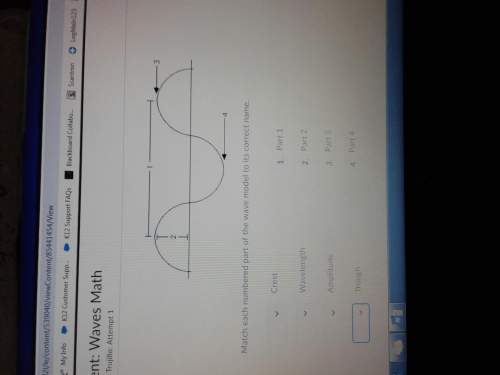
Physics, 12.02.2021 16:20 thomasalmo2014
A motion detector measures distance to the nearest object by using a speaker and a microphone. The speaker clicks 30 times a second. The microphone detects the sound bouncing back from the nearest object in front of it. The computer calculates the time delay between the making of the sound and receiving the echo. It knows the speed of sound (albout 343 m/s at room temperature) and from that, it can calculate the distance to the object from the time delay.
A. If the nearest object in front of the detector is too far away, the echo will not get back before a second click is emitted. Once that happens, the computer has no way of knowing that the echo isn't an echo from the second click and the detector doesn't give correct results anymore. Once the speaker emits a click, how much time does the echo have to return to the microphone before the next click is emitted? What's the furthest away the object can be so that the echo returns before the next click is emitted? (Give your answer to three significant figures.) m
B. The speed of sound changes a little bit with temperature. Let's try to get an idea of how important this is. At room temperature (72'F) the speed of sound is about 343 m/s. At 62 F it is about 1 % smaller. Suppose we are measuring an object that is really 1.5 meters away at 72'F. What is the time delay At that the computer detects before the echo returns? Now suppose the temperature is 62'F. If the computer detects a time delay of At but (because it doesn't know the temperature) calculates the distance using the speed of sound appropriate for 72'F, how far away would the computer report the object is? (Give your answer to 3 significant figures.)
C. Explain your reasoning for parts A and B.

Answers: 1


Another question on Physics

Physics, 22.06.2019 11:30
If forces acting on an object are unbalanced. true or false
Answers: 1


Physics, 22.06.2019 18:30
Which of the following is not a means to accelerating? question 4 options: a)increase speed b)remain still c)decrease speed d)change direction
Answers: 1

Physics, 22.06.2019 20:30
We will use a video to study faraday’s law of electromagnetic induction by analyzing the induction that occurs due a coil of copper wire sliding along an air track that passes through an external magnetic field. specifically, we will: examine some of the main principles behind faraday’s law. apply lenz’s law to determine the direction of the induced emf. take measurements of the induced emf from the voltmeter as the coil passes into and out of the external magnetic field. use the horizontal scale provided to determine the speed of the coil. calculate the magnetic field induced in the coil as it passes into and out of the external magnetic field.
Answers: 2
You know the right answer?
A motion detector measures distance to the nearest object by using a speaker and a microphone. The s...
Questions

Mathematics, 12.10.2019 01:30


Physics, 12.10.2019 01:30

History, 12.10.2019 01:30


Biology, 12.10.2019 01:30



Mathematics, 12.10.2019 01:30

Biology, 12.10.2019 01:30

History, 12.10.2019 01:30


Biology, 12.10.2019 01:30


History, 12.10.2019 01:30

Mathematics, 12.10.2019 01:30

Mathematics, 12.10.2019 01:30






